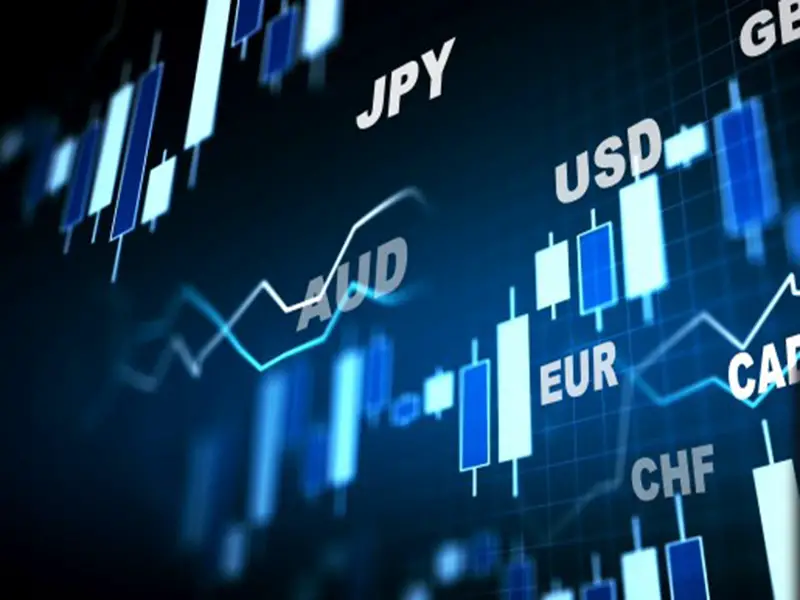The foreign exchange market is the largest market in the world. It facilitates trillions of US dollars of currency transactions on a daily basis. It provides a meeting place for individuals, businesses and even governments that seek to exchange one currency for another. The majority of world trade is denominated in US dollars, even where this is not the case the relationship between most countries currencies is determined indirectly through the US Dollar. A South African business that wants to buy products in China will calculate the value of their Rand in Chinese Yuan through he US dollar. The foreign exchange market provides such opportunities for trade in gold, oil, minerals and many other commodities. The market also features speculators and traders.
Table Of Contents
Features Of The Foreign Exchange Market
The features of the foreign exchange market include it’s high liquidity, transparency, dynamism, 24 hour operation, low transaction cost, and a large bias towards towards the US dollar. The foreign currency market operates on a pairs basis, it is not concerned with the value of a currency by itself as there are many factors that affect measurement but rather the value of one currency against another specified currency. For example the most popular pair is the US dollar versus the Euro (USD/EUR). Any two currencies can be paired in the market.
High liquidity
The most prominent foreign exchange market feature is the liquidity of the market. This is possible because of the markets size and its geographical spread. The foreign exchange market processes US$5.1 trillion worth of transactions per day. The market is extremely active and as such there is always some activity going an at any given time. This is an important feature of the market for participants as it means that trades can be executed at any time. With high liquidity also comes ease of entry and exit in a market which traders also find very important.
Market transparency
The foreign exchange market features high information efficiency. With transactions on the.market being recorded electronically and information updated very quickly across the market it is considered to be both very efficient and transparent. The market is too large and spread out to be manipulated by a single individual or group. Transactions cannot be concealed either. Another feature that is deemed important by market participants. When markets feature information asymmetry or information inefficiency it creates camps of winners and losers depending on market movements. A transparent market means all information in the past and present that is known is displayed in the prices and there are no opportunities for manipulation of other participants.
Dynamic market
The foreign exchange market is considered dynamic because it provides a myriad of opportunities to earn a profit. While equity markets in comparison can only be profitable on the condition that you own an equity and its value goes up the foreign currency market provides opportunities to make profit based on the market value of a particular currency going up or down. This feature of the foreign exchange market is one of the key reasons the market is so large because this factor opens it up to many more market participants. People who genuinely require foreign currency for transacting purposes, people who seek foreign currency for hedging purposes, speculators and many types of participants can find a home the foreign exchange market thanks to this feature.
Operates 24 hours
The foreign currency market starts operating in Japan because Japan is the first country to operate markets based on time zone. As other countries start their days and eventually end theirs the market moves to the next time zone. With the Americas being the last to operate in a given day. Not long after the American close the Japanese trade opens again and so it continues. There is trading going on within the foreign currency market at any given time as there is always a need for its services.
Lower trading Cost
The foreign exchange market features low trading costs because it does not have restrictive barriers to entry or high fees p[laced on transacting by brokers. With very small percentages being charged for transactions participants can utilise more of their money in trades and this foreign exchange market feature makes it favourable with small participants which widens the market even more. In other markets such as equity is customary to have brokers who require potential participants to firstly have large sums to participate in the market and secondly charge large transaction fees in order to process these transactions.
Dollar Most Widely Traded
As mentioned before the US dollar is the most widely traded currency in the world and many currencies calculate rate for other currencies through the corresponding US dollar value also known as cross rate. In the majority of trades or pairs carried out on the foreign exchange market the US dollar is one of the currencies that is traded. This foreign exchange market feature is commensurate with the majority of world trade which is denominated in US dollars.
Based on the listed features of the foreign exchange market it is very easy to understand why the market enjoys the popularity it does. The market is very important to international trade and commerce as it provides the perfect platform for many different types of market participants to make use of the services available.
